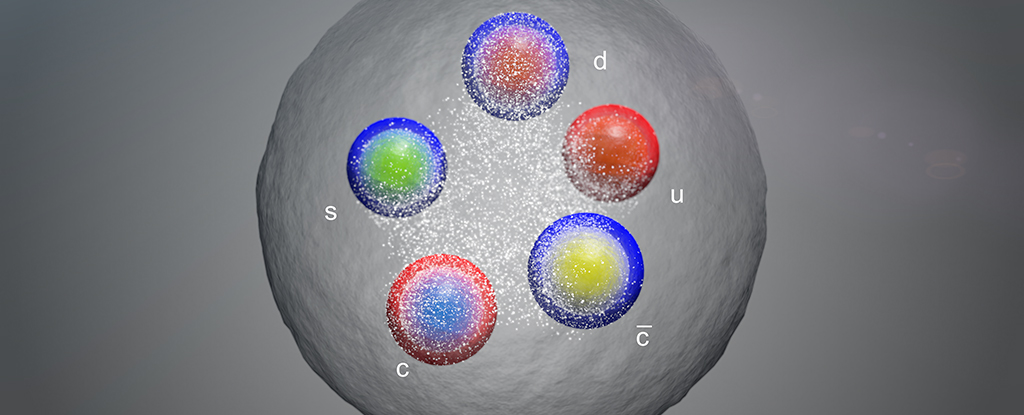scientist at Large Hadron Collider (LHC) continue to discover exotic particles we have never seen before. The latest discovered in experiments is the first pentaquark contain a strange curd.
If you’re new to quarks, they’re the subatomic building blocks that make up matter, and the strange quark is one of them six different types: up, down, up, down, charming and strange. You will mostly find for example, three quarks in both protons and neutrons.
Back in 2015Experiments at the LHC confirmed the existence of pentaquarks, i.e. four interconnected quarks and one antiquark. That was about 50 years after scientists began to theorize their existence.
Further research released in 2019 revealed the underlying structure of pentaquarks: as suspected, they consist of a meson (a quark and antiquark pair) and a baryon (a set of three quarks).
Now the LHC team has found a new pentaquark combination. It contains a charm quark, an up quark, a down quark, and a strange quark, as well as a charm antiquark (the antimatteropposite charge equivalent of a charm quark).
This requires some very complex calculations Discover these new particles, once the LHC has advanced the high-speed collision processes. Algorithms search the scattered debris for patterns that could represent new particles.
The decay of these particlesthe components it breaks down into are then analyzed to see if it is indeed something entirely new – and various statistical significance thresholds must be met.
Dozens of these have been discovered with the LHC exotic particles so called because they go beyond the two-quark and three-quark structures. They help scientists understand the basic building blocks of existence and how those building blocks interact with each other.
In particular, researchers are interested in overcoming this standard model of physics to explain some of the anomalies that still exist in it. It doesn’t really matter Dark mattersuggesting, for example, that there are fundamentals out there that we have yet to observe and discover.
The 27-kilometre (17-mile) LHC continues to improve in performance and efficiency, and we can expect many more breakthroughs to come – perhaps even eclipsing the discovery of the Higgs boson in 2012.
The research was originally announced at the ICHEP 2022 International Conference on High Energy Physics in Italy and is scheduled to be published in Physical Examination Letters.





